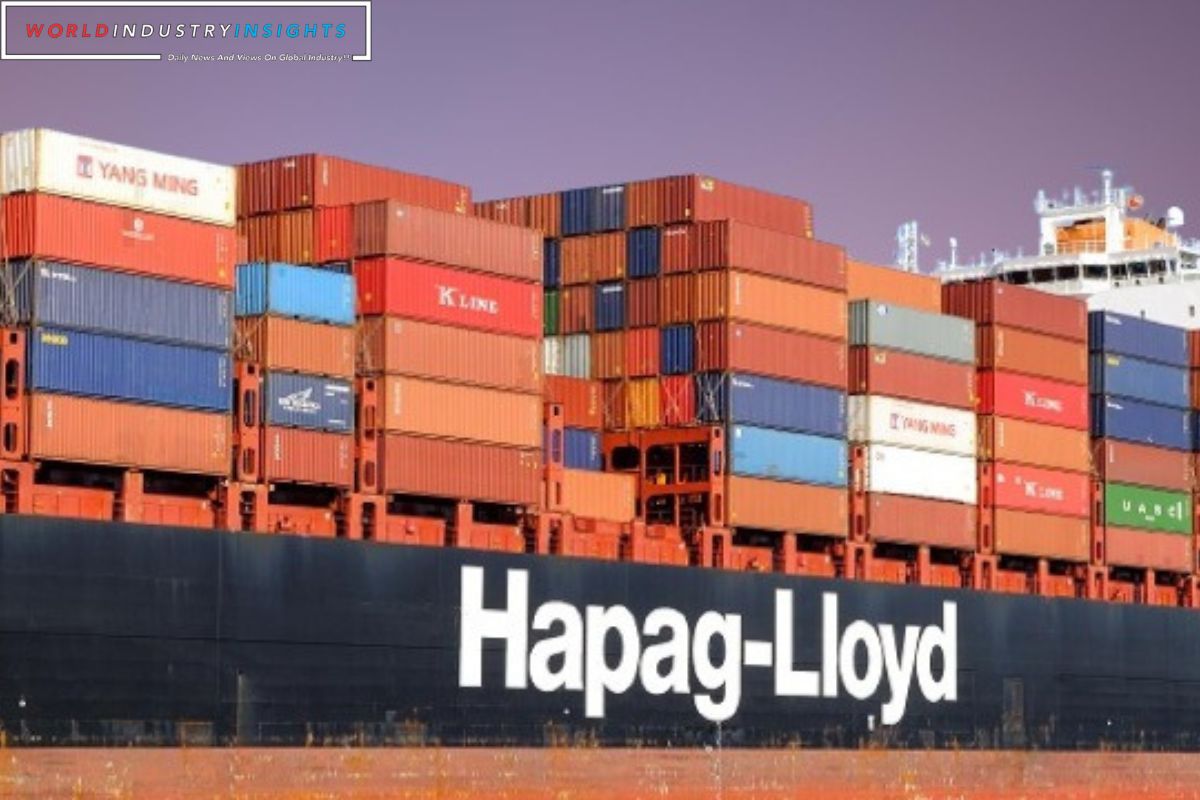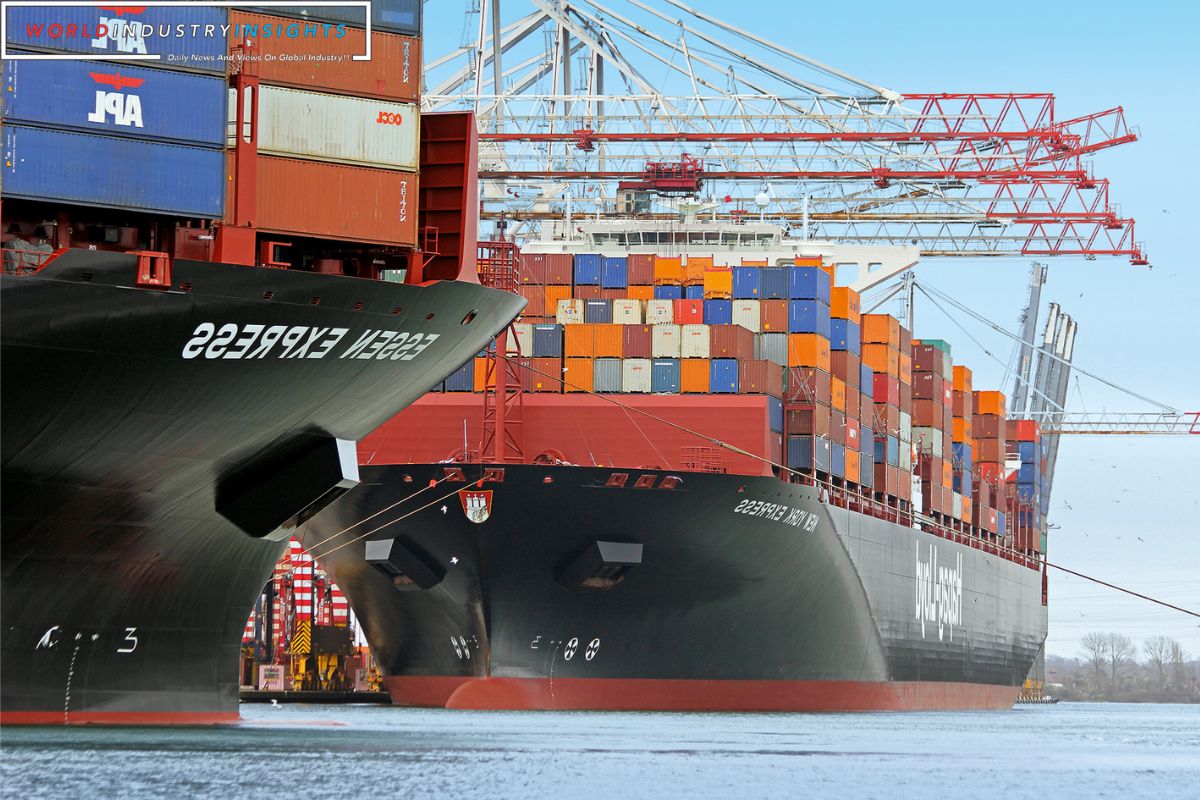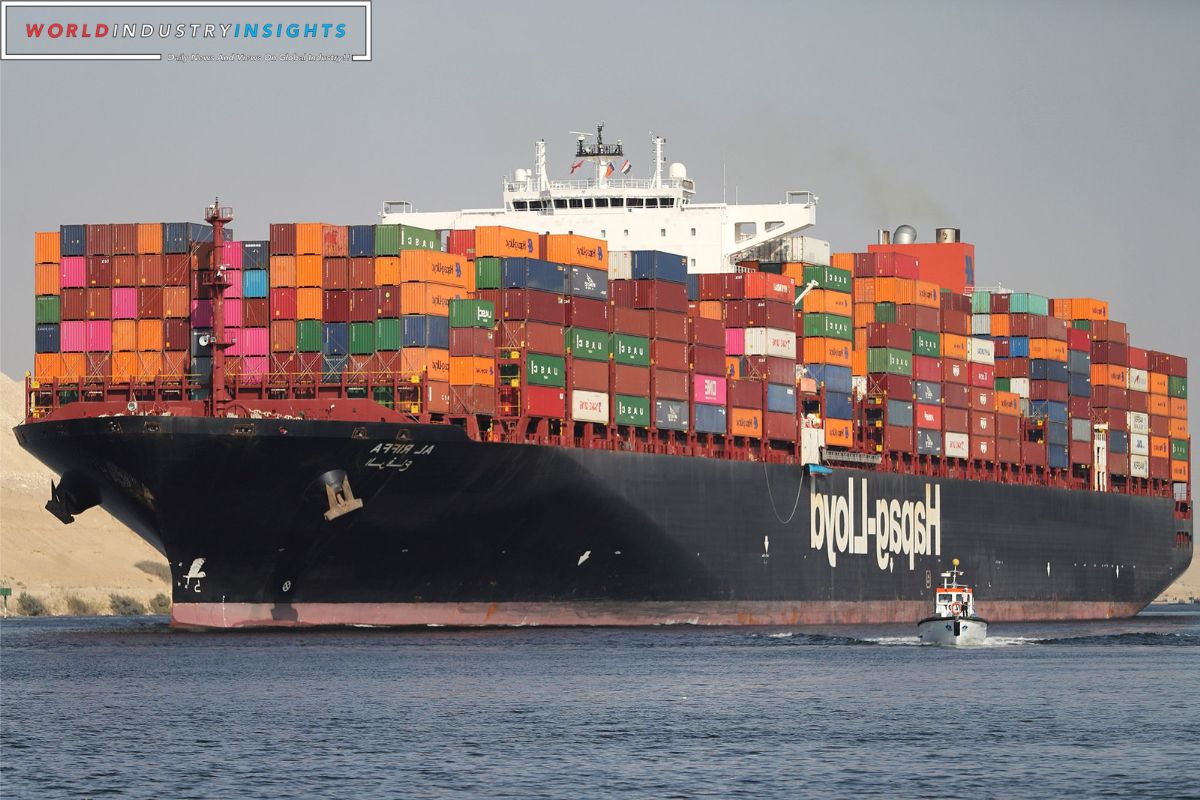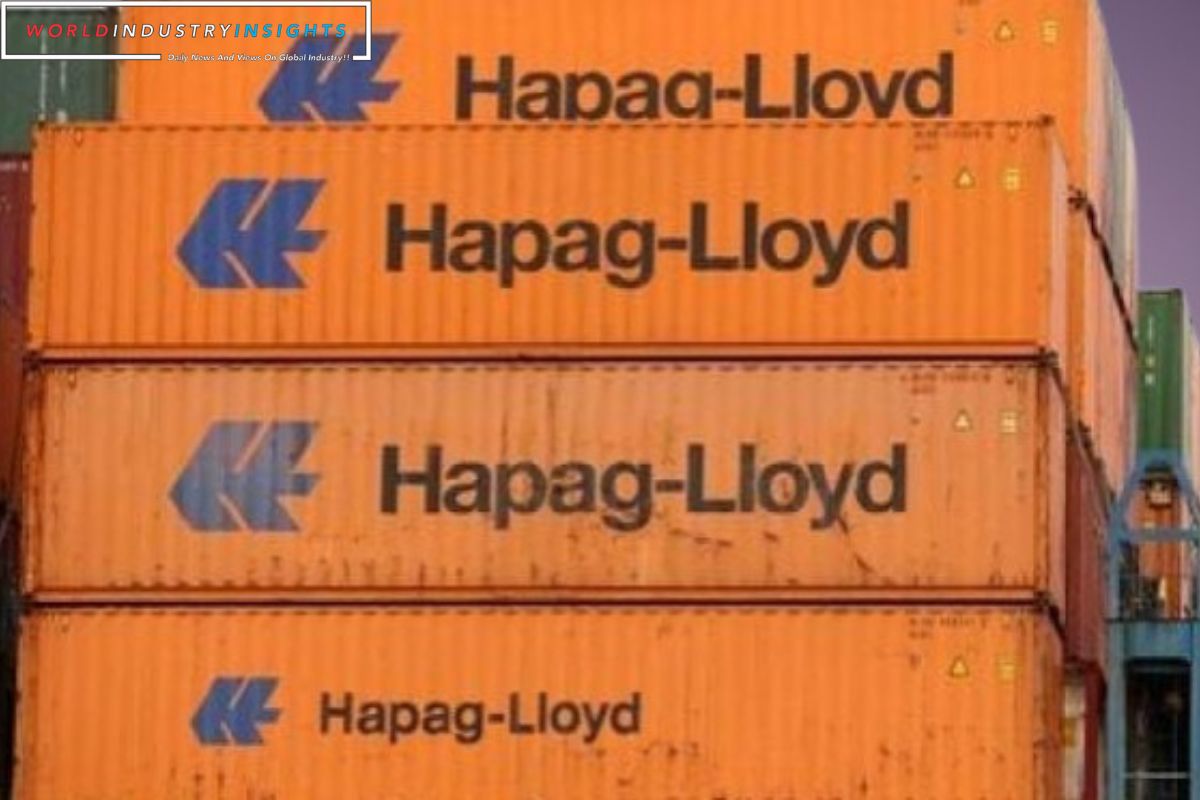Hapag-Lloyd’s Strategy: In an ever-evolving global shipping landscape, Hapag-Lloyd, one of the world’s leading container shipping companies, finds itself at a crossroads as it contemplates its strategy to avoid the potential troubles in the Red Sea region.
With increasing concerns over the safety and security of vessels navigating through this volatile area, Hapag-Lloyd’s pending decision on whether to suspend or continue its operations in the Red Sea routes has garnered significant attention and speculation within the industry.
As various stakeholders eagerly anticipate the company’s next move, the implications of Hapag-Lloyd’s strategy will undoubtedly reverberate throughout the shipping world.
Stay tuned as we explore the reasons behind these potential suspensions, the expectations for Hapag-Lloyd’s decision process, and the industry’s reactions to this pivotal moment.
Key Takeaways
- Hapag-Lloyd is deliberating whether to resume Red Sea routes, which will have a significant impact on the company’s operations and global trade.
- The decision made by Hapag-Lloyd will influence other companies in the industry, serving as a warning to them.
- The safety of crew and cargo is the top priority for shipping companies like Hapag-Lloyd, and hasty decisions could jeopardize personnel and shipment security.
- The suspension of Red Sea shipping by Hapag-Lloyd and Maersk has caused significant industry reactions, emphasizing the need for robust security measures and vessel/cargo safety.
Hapag-Lloyd’s Pending Decision on Red Sea Routes
Hapag-Lloyd is currently deliberating its decision on whether to resume its Red Sea routes, following the suspension of shipments due to safety concerns and the recent attacks in December that have disrupted global trade through the Suez Canal.
Also Read: Hapag-Lloyd Odyssey: Navigating Stormy Seas in a Turbulent Maritime Landscape
This decision holds immense significance as it can potentially determine the future of Hapag-Lloyd’s operations in the region. The Red Sea has been plagued by security issues lately, with several firms halting their transit through this vital trade route.
The disruptions caused by these attacks have reverberated across the globe, impacting trade flows through the Suez Canal. Hapag-Lloyd’s pending decision on whether to resume its Red Sea routes will not only impact its own business but also have far-reaching consequences for the global trade landscape.
The eyes of the industry are now fixed on Hapag-Lloyd as they weigh the risks and benefits of returning to these troubled waters. It remains to be seen what course of action the company will take, and the implications of their decision are sure to provoke intense discussion and debate within the shipping community.
Reasons Behind Red Sea Route Suspensions”
Due to ongoing safety concerns and recent attacks in December, the Red Sea routes have been suspended, causing significant disruptions to global trade and prompting other shipping companies to reconsider their operations in the region.
The decision to suspend the routes was not made lightly, as it directly affects the flow of goods and impacts economies worldwide. The attacks in December were a wake-up call for the shipping industry, highlighting the dangers and risks associated with navigating these waters.
Shipping companies must prioritize the safety of their crew and cargo above all else, and suspending the Red Sea routes is a necessary step in mitigating the potential for further attacks.
This move by Hapag-Lloyd serves as a warning to other companies, urging them to carefully evaluate the risks involved in operating in this volatile region.
Expectations for Hapag-Lloyd’s Decision Process
Considering the ongoing safety concerns and recent attacks in the Red Sea, Hapag-Lloyd’s decision-making process regarding the future of their operations in the region is expected to prioritize the well-being of their crew and cargo above all else. The company cannot afford to take any risks that could potentially jeopardize the safety of their personnel or compromise the security of their shipments.
With the lives of their crew members at stake and the potential for significant financial losses, Hapag-Lloyd cannot afford to make a hasty decision. They must carefully evaluate the situation and weigh the risks before proceeding.
Their customers also rely on them to ensure the safe delivery of their goods, and any decision made by Hapag-Lloyd will undoubtedly have an impact on their operations. The outcome of this decision is uncertain, but one thing is clear: Hapag-Lloyd’s priority is the safety of their crew and cargo.
Industry Reactions to Red Sea Shipping Suspensions
The suspension of Red Sea shipping has sparked significant reactions within the industry, leading to concerns about global trade disruptions and a keen focus on security measures.
The decision by firms such as Hapag-Lloyd and Maersk to halt shipments in the region has sent shockwaves throughout the maritime community. The potential for trade disruptions has sent shivers down the spines of industry professionals who understand the critical role the Red Sea plays in global trade flows.
The need for robust security measures has become paramount, as companies scramble to ensure the safety of their vessels and cargo. This suspension has reminded the industry of the vulnerability of shipping routes and the potential for maritime incidents to wreak havoc on global trade.
Industry players are eagerly awaiting updates on the resumption of shipping operations and the effectiveness of the implemented security measures.
Rate Updates from Hapag-Lloyd
Hapag-Lloyd has announced rate updates for shipments from the Indian Subcontinent to North America, effective January 18, 2024. This move by Hapag-Lloyd is nothing short of a blatant attempt to squeeze more money out of customers. The additional charge of US$200 per container for 20 and 40 dry, reefer, and special containers is simply outrageous.
It is clear that Hapag-Lloyd is taking advantage of its dominant position in the market to impose these exorbitant fees. This is a slap in the face to exporters and importers alike, who are already grappling with rising international shipping costs. Hapag-Lloyd’s greed knows no bounds, as they continue to exploit the trade between India and North America for their own financial gain. It is high time that customers stand up against these unfair practices and demand transparency and reasonable rates from Hapag-Lloyd.
- This rate increase will have a significant impact on export activities from the Indian Subcontinent to North America.
- The new charges will further burden logistics planning for businesses involved in this trade route.
- Hapag-Lloyd’s rate updates highlight the ongoing challenges and uncertainty in the shipping industry and raise concerns about the future of trade between India and North America.
Conclusion Of Hapag-Lloyd’s Strategy
Hapag-Lloyd’s decision to suspend its Red Sea routes has sparked controversy and raised concerns within the industry.
While the company’s strategy to avoid potential troubles in the region is understandable, many stakeholders are questioning the long-term impact on shipping rates and the overall stability of the market.
As Hapag-Lloyd weighs its options, industry players anxiously await the company’s next move, hoping for a resolution that ensures both safety and profitability.
Our Reader’s Queries
What is the Hapag-Lloyd Strategy 2030?
Our goal is to achieve sustainable recycling of all our ships. By 2030, we aim to significantly reduce large-scale waste, with a focus on gradually reducing and recycling waste generated at Hapag-Lloyd offices. We are committed to implementing environmentally-friendly practices that will help us achieve these objectives.
What are the goals of Hapag-Lloyd?
For over 175 years, Hapag-Lloyd has been dedicated to connecting the world across oceans. It’s our mission and we’re proud to say that we’ve been achieving it all along.
What are the core values of Hapag-Lloyd?
Hapag-Lloyd’s values of “We care. We move. We deliver.” extend to our approach to IT. We recognize that technology services are not just a means to an end, but an essential and crucial aspect of our company’s success. Our IT department is viewed as mission-critical, and we prioritize its role in supporting our operations.
What is the main activity of Hapag-Lloyd?
As a top-tier liner shipping company, Hapag-Lloyd is a reliable and formidable ally for your business. With a fleet boasting a vessel capacity of 2.0 million TEU and a container capacity of 2.9 million TEU, including one of the world’s largest and most advanced reefer container fleets, we have the resources to meet your shipping needs. Trust us to deliver your cargo safely and efficiently, wherever it needs to go.




